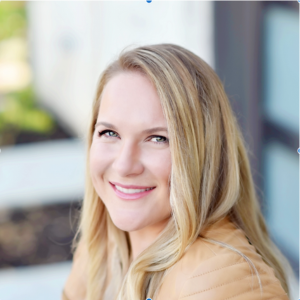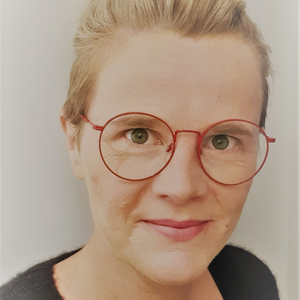How Neurodiversity Can Enhance Your Organization
 Roben Dunkin, chief operations and innovation officer at PGIM, talks about the importance of neurodiversity in creating a culture of innovation in the workplace.
Roben Dunkin, chief operations and innovation officer at PGIM, talks about the importance of neurodiversity in creating a culture of innovation in the workplace.
A Lesson From Mom
When she was just a little girl, Roben Dunkin received one of the biggest lessons that would later help shape her nearly three decades in the finance industry, most recently as chief operations and innovation officer at PGIM, the $1.5 trillion asset management business of Prudential Financial Inc. It was a lesson she learned from her mother, a teacher at a school for children on the autism spectrum. Meeting the children her mother worked with and seeing how she related to them was eye opening.
“The autism spectrum is such a broad range of so many different ways the brain works,” Dunkin says. “I could see my mom’s frustration, because the ability to communicate for some of these kids wasn’t there. But at the same time, I saw her compassion and patience. She found a way to understand what each one of them needed and she found a way to get through. She never gave up on anyone.”
That experience was something that stuck with her as she began her career in finance at Lehman Brothers, where she rose to global head of sales and investment banking technology.
“What I learned from my mom actually makes me a good manager—having that patience, and really trying to understand the different levels of how people communicate with each other,” Dunkin says. “It’s not just people with autism, everyone is so different and kind of quirky in their own way. Within my own family, we have a lot of dyslexia and ADHD. When you grow up with that around you, you learn that some people need extra time and attention to bring out their best. And their best might astound you. Not everyone understands that. They think if someone has one of those conditions, they’re not smart, or they’re not good enough.”
After Lehman’s failure in the financial crisis, Dunkin joined Credit Suisse and became a leader in the firm’s technology organization. In a position to influence the company’s talent strategy, she set her sights on changing management’s perception of what traits made a valuable employee.
The Great Untapped Population
“Everyone seems to understand now how important diversity is to a company, but too often, they overlook a large part of our population that is truly underserved, but also incredibly talented—one that crosses, race, religion, gender, sexual orientation and national origin,” Dunkin says. “People across the neurodiverse spectrum, which includes everything from Asperger’s and autism to ADHD and dyslexia, have to face a stigma. Their levels of unemployment are quite higher than the general population—as high as 80%.”
And yet, Dunkin points out, even if someone doesn’t have any of these conditions, they almost certainly know someone who does.
“Earlier in my career, one of my peers had a son who had Asperger’s syndrome and couldn’t get a job. And we talked about how so many people who are on the spectrum, their brains think differently—sometimes they can see patterns other people can’t, they go about solving problems differently, and that can be a good thing. We started just kind of brainstorming, asking, ‘What can we do about this?’”
The idea that Dunkin and her colleague eventually developed was to actively seek out neurodiverse individuals for a pilot program in data science—specifically, to identify anomalies in data surrounding trade fails. Trade fails can happen when there are mistakes in processing or mismatched information, and they can be a costly problem for a firm. One of the goals of Roben’s team was to discover if there were particular clients, types of trades, or other patterns that would help them identify where problems might occur. While AI and machine learning could parse huge amounts of data, the computers had their limitations. There were still reams of data to filter out.
Participants in the pilot program, as it turned out, were quick to find patterns others had missed. “They were able to look at the data and pinpoint the issue, pinpoint the problem. They had the ability to redirect the technology to ask the right questions. That’s such a specific skill set that most of us really have to learn. There seemed to be an innate ability in some of the people that we were working with to be able to do that,” Dunkin says. “It was just really impressive the amount of positive feedback that we got from people working with the individuals in the pilot program. And those participants—they were so thrilled to be employed and really contribute. It was so rewarding on so many levels.”
Dunkin doesn’t want to make it sound simple, because it isn’t. A lot of legwork went into making sure the program was set up for success.
The Right Goals, The Right People, The Right Projects
It’s the same work Dunkin is putting in now to establish the neurodiversity program at PGIM, with one big difference.
“We’re not looking to narrowly focus this on one area of the business,” Dunkin says. “Individuals on the spectrum have skills and interests that are just as diverse as their neurotypical peers, and we see this as something we want all our asset managers to be involved in and benefit from.”
That begins with a firm commitment from the top.
“Neurodiversity can be a very emotional topic,” Dunkin says. “Recently we had a panel with many of our senior leaders at PGIM, some with children who are on the spectrum, even leaders who identify as neurodiverse themselves. The head of our largest asset management business spoke at length about his two sons who have autism. We had hundreds of employees attend and it was game changing for a lot of people who were able to put their hand up and self-identify. We broke through a lot of walls.”
Secondly, for a neurodiversity program to succeed, managers need to be trained and prepared to work with individuals who may miss social cues. Those managers need to be clear about expectations and literal about tasks.
“Cues and signals that we might expect would be normal are not normal for a lot of people on the spectrum. So you have to ask questions differently—you have to be more nuanced, and can’t worry about body language and eye contact. Job interviewers and managers should be able to understand how to engage with people differently,” Dunkin says. “It’s important to learn where someone is on the spectrum and understand how to help them thrive and deliver their very best. Do they feel more comfortable emailing, do they not do well in a group setting? You want to always be learning how you can give and receive feedback so you can course correct relatively quickly.”
The remote work environment brought on by the pandemic has added to this challenge.
“In some cases, if you talk to some of the people who are on the spectrum, they’re loving remote work, because they don’t have to interact with people in person,” Dunkin says. “At the same time, for a manager, it makes it even more difficult to engage with that individual and make sure they feel included.”
Finally, Dunkin says you need to connect individuals with the right projects, with a clear business case and business value.
“You can’t necessarily put someone on a trading desk environment, but you can put someone on in a data science role. So it’s being very clear about matching the person and the right skill set with the right job and being really explicit about what you’re aiming to accomplish,” Dunkin says.
Why all this matters
“The financial services industry is struggling to hold onto talent,” Dunkin says. “And here is a talent pool that is able and willing to work, and has skills to contribute in the right roles.”
Her prior experience tells her the effort is worth it.
“It’s hard to find data scientists—you can’t train them fast enough. And we know there’s high attrition rates in data science—when you train them, they leave. But our neurodiverse employees in the pilot program were super loyal. We built a team of data scientists from scratch who were able to help us leapfrog ahead quite drastically to meet our goals. We’d done right by them, we gave them a chance, and they rewarded us by staying with the company.”
Dunkin believes that attention paid to neurodiversity in an organization has a much wider impact on company culture, leading to better outcomes for all employees.
“The pandemic has been a very challenging time,” she says. “We’re all uncomfortable, we’re all re-learning how to interact with each other, we’re all working differently. We all need compassion and patience. If we’re not using this moment to identify talented individuals inside and outside our organizations and do what we need to do to support them, then we’re wasting a golden opportunity.”











